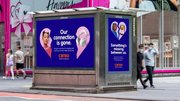Article
How to keep digital signage content from becoming visual spam
If no one notices digital signage content in the visual forest, does it make a difference?

April 10, 2012 by Christopher Hall — writer, self
Digital signage content is the key to getting viewers to engage with the message, but if that content isn't engaging, it can simply blend into the background visual noise in its environment, and become little more than visual spam.
Avoiding that ignominy was the main focus of a panel session, "How to Avoid Your Digital Signage Content Becoming Visual SPAM," at this year's Customer Engagement Technology World show in San Francisco.
The panel was led by Scott Matthews, managing partner/CEO for Learning Evolution and MG Digital, and featured Courtney Kurdziel, director of marketing for the Straw Hat Pizza chain, and James Velco, CTO for the John Marshall Law School in Chicago.
During his panel introduction, Matthews cited survey data that indicates that a majority of digital signage users cite content as their biggest challenge. According to his data, 36 percent said producing engaging content was their most significant challenge, while 21 percent cited producing enough content, and 20 percent said it was finding room in their budget to produce content.
Kurdziel focused on the utility of digital menu boards in fast casual restaurants such as the 55-location Straw Hat Pizza chain, while Velco talked about the different challenges of reaching an audience of students, faculty and staff in a four-building urban campus.
"It's not about the technology," Matthews said. "It's about the human interaction."
Digital menu boards
Straw Hat Pizza initially looked into digital signage technology in the wake of California menu-labeling laws, and the potential for future federal guidelines, Kurdziel said.
"How do we do that so franchisees don't have to install new menu boards every month or every year?" she asked. Digital menu boards fit the company's needs, she said, and the company also saw digital as a way to engage a younger demographic. "Digital just seemed to make the most sense for us."
Keys to making the digital menu board content relevant and engaging included using video and dayparting, or making sure the menu board content was relevant to the time of day, lunch or dinner, she said.
And the use of digital signage technology has had a direct effect on the bottom line, Kurdziel said. "It's really made an impact, especially on our appetizer sales."
"A menu board is no longer just a menu board, it's so much more," she said.
There are some key concepts to keep in mind for digital menu board content, according to Kurdziel:
- Use engaging content
- Use scrolling, movement, in your graphics
- Show content for no more (or less) than 7-10 seconds
- Use video to be more engaging
- Keep the display clean and uncluttered to keep it from being confusing
- Make it easy to read from 5-10 feet away
Also, try to show some restraint, she said. Show images of select items, like sale or promotional items, or limited-time offers. Showing every single menu item is overwhelming, particularly for older customers.
Interactive digital signage
At John Marshall Law School, the "customers" are the school's students, faculty and staff, Velco said, and one of the main keys in the school's digital signage content strategy is interactivity and "personally relevant information."
The law school's aim is to create ways for the viewer to engage with the content on its screens. Customers don't want to stand around and wait for the content they want or need, so screens are interactive, with searchable content. And the school works to provide data on the screens that is personally relevant to the intended audience.
For instance, Velco said, the law school displays bus- and train-schedule information on the screens for students to access. The information is pulled from a city website, he said, where the information is presented in a complicated and difficult-to-use format. The school cleans it up and simplifies it to make it more useful to viewers.
Also, John Marshall's screens use near field communication technology to make themmore interactive. Students can swipe their school ID card to get info displayed sent to their student email accounts, automatically.
According to Velco, digital signage content needs to be several things:
- Compelling
- Intuitive
- Interactive
- Personally relevant to the viewer
- Easy to access
- Valuable and useful to the viewer right now
- Searchable
- Able to provide real-time unique data that may not be available on a website or mobile app
- Transportable/transferable (to other devices/formats); "Is it something they can take with them?"
Seeing how graduate-level students engage with digital signage technology in a collegiate setting provides valuable insights into how people will engage with the technology in the future, Velco said:
"The expectations of the next generation will shape the future of content."
Wrapping it up
In his session recap, Matthews offered up some key concepts to avoid content becoming visual spam:
1 – Research: Know your audience.
2 – Planning: Plan engaging content that fits your strategy and is relevant to your audience.
3 – Building: Build relevant content with a good user interface ("Content with a poor user interface will be ignored," he said)
4 – Get it right: Getting it right is more important that getting it fast, he said. Taking more time to get the content right will pay dividends when the digital signage is launched.
Read more about digital signage content.
"It's not about the technology," he reiterated. "It's about creating a positive user experience and value for the user."









